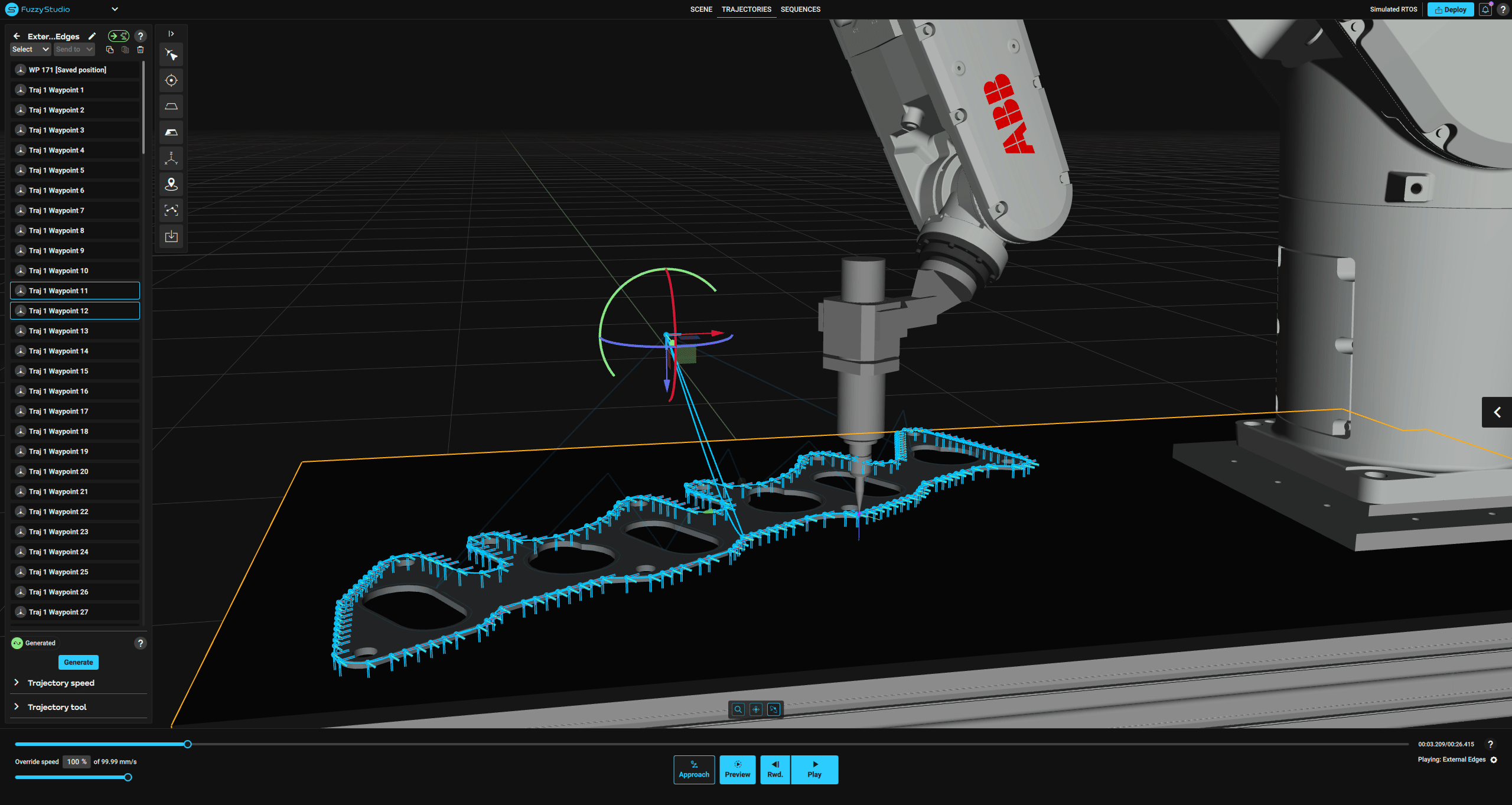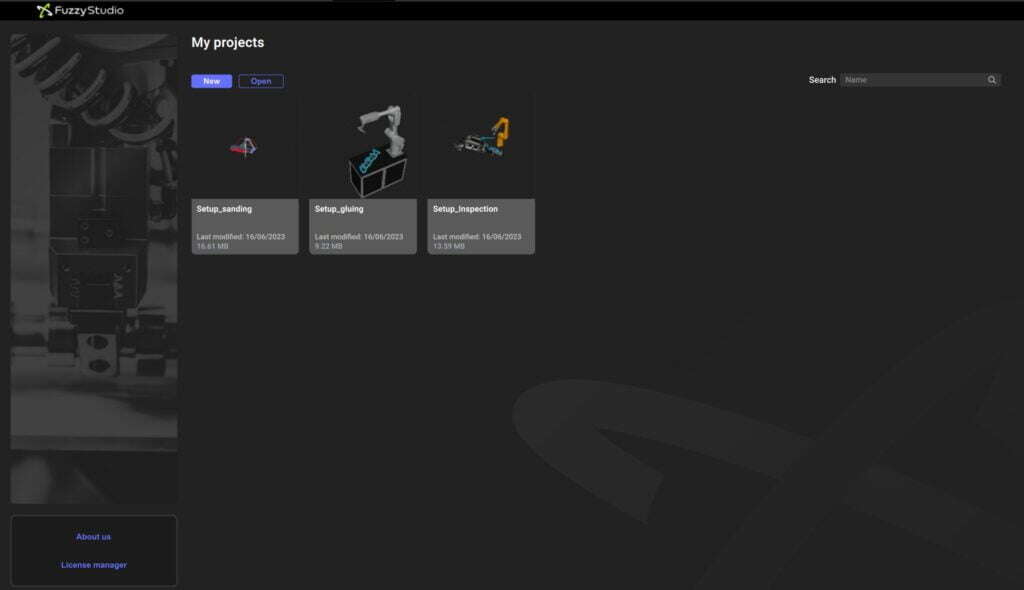
What's new with Fuzzy 5.0 ?
Fuzzy Studio and Fuzzy RTOS 5.0 introduce Fuzzy RTOS Standalone, sequences, and updates to variable exchange and communication protocols, improving automation capabilities and system flexibility.
Fuzzy Studio
New visual identity
A brand new visual identity has been introduced for Fuzzy Studio’s interface, bringing a modern, cohesive look that enhances usability and consistency. This redesigned identity unifies the software’s various components, ensuring a more seamless and intuitive user experience. By harmonizing the interface, the update not only improves aesthetics but also reinforces functionality, making navigation more fluid and interactions more efficient. This evolution reflects Fuzzy Studio’s commitment to providing a powerful yet user-friendly environment for its users.
![]()
.gif?width=774&height=411&name=Edge-12af65166e38c6485f20ff5d9f0884a6%20(1).gif)
![]()
Updated Fuzzy Studio homepage

The homepage now provides better access to local and remote projects. Local projects remain available, while projects deployed on embedded Fuzzy RTOS devices and remote Fuzzy RTOS instances are now listed on the homepage.
Improved license manager
The Fuzzy Studio License Manager now handles Fuzzy RTOS licenses as well, streamlining license management by providing a unified platform for overseeing all Fuzzy product licenses. This integration simplifies the activation process for Fuzzy RTOS, allowing users to easily manage their licenses without additional configuration steps.

Sequences available for trajectory and event management
Fuzzy Studio now supports sequences, allowing users to chain trajectories and actions or events for more structured automation. This feature enables actions such as object handling, including hiding, showing, moving CAD models, changing tools, and removing tools. It also supports trajectory execution with approach and play actions, as well as variable management with pause, wait, and set commands. Sequences provide a more flexible and organized way to define automation processes.
A new example project has been added to show how to use sequences in Fuzzy Studio.

The notifications system has been added to inform the user about required actions such as validity checks or deployment, as well as errors that may occur.

Fuzzy RTOS
Standalone mode with direct .fsproj support

Fuzzy RTOS now supports .fsproj project files, enabling projects to run independently without requiring Fuzzy Studio. The exchange table is also fully accessible without Fuzzy Studio, allowing external devices to send and receive actions or events directly. This ensures that once a project is deployed, Fuzzy Studio can be disconnected, and the project will continue running on Fuzzy RTOS without interruption.
Projects can now be deployed directly from Fuzzy Studio with the Deploy button :

As the project is deployed and hosted directly in the Fuzzy RTOS, trajectories may be generated from another external part. To highlight this, the Fuzzy RTOS activation Icon color changes when active trajectory generation in Fuzzy RTOS is different from the one currently in Fuzzy Studio.

The Fuzzy RTOS web dashboard is now accessible directly from Fuzzy Studio, removing the need for the Fuzzy RTOS launcher.

REST API replacing MQTT communication
A new REST API has been introduced to replace MQTT communication between Fuzzy Studio and Fuzzy RTOS, improving performance, reliability, and integration flexibility.
New External Device Editor
The External Device Editor has been introduced in Fuzzy Studio, providing more flexibility in configuring external device communication.
Note: To improve clarity, the term "IO" in the Fuzzy Studio Exchange Table has been replaced with "variable", while "IO" remains in use for inputs and outputs within robot controllers.
New protocol options have been added, with MQTT, TCP, and UDP now available for external device communication.
Additionally, a timeout function has been implemented to enhance safety. If no message is received within the specified time, the device will automatically stop the robot to prevent unintended behavior.
.png?width=391&height=732&name=image%20(11).png)
Fuzzy RTOS now allows data exchange using MQTT, TCP and UDP, providing more options for communication protocols and system compatibility. The data exchange was previously hosted by Fuzzy Studio. Hosting it on the Fuzzy RTOS side makes it unnecessary to use Fuzzy Studio when running the project.
Trajectory Generation via Exchange Table
Fuzzy RTOS now supports trajectory generation through the exchange table, enabling external devices to create and modify trajectories dynamically.

I/O support for Universal Robots controllers
Fuzzy RTOS v5.0 brings I/O support for Universal Robots controllers, expanding hardware compatibility within Fuzzy RTOS.
For more details, refer to the updated Fuzzy Studio and Fuzzy RTOS documentation.
Improved Network Interface Naming
Network interfaces now have human-readable names for easier identification.
Note: Existing configurations will be lost after upgrading.
New Robots Added

Fuzzy Studio and Fuzzy RTOS now support the ABB IRB 2400-16/1.55 and KUKA KR30 HA, expanding compatibility with more robot models.

